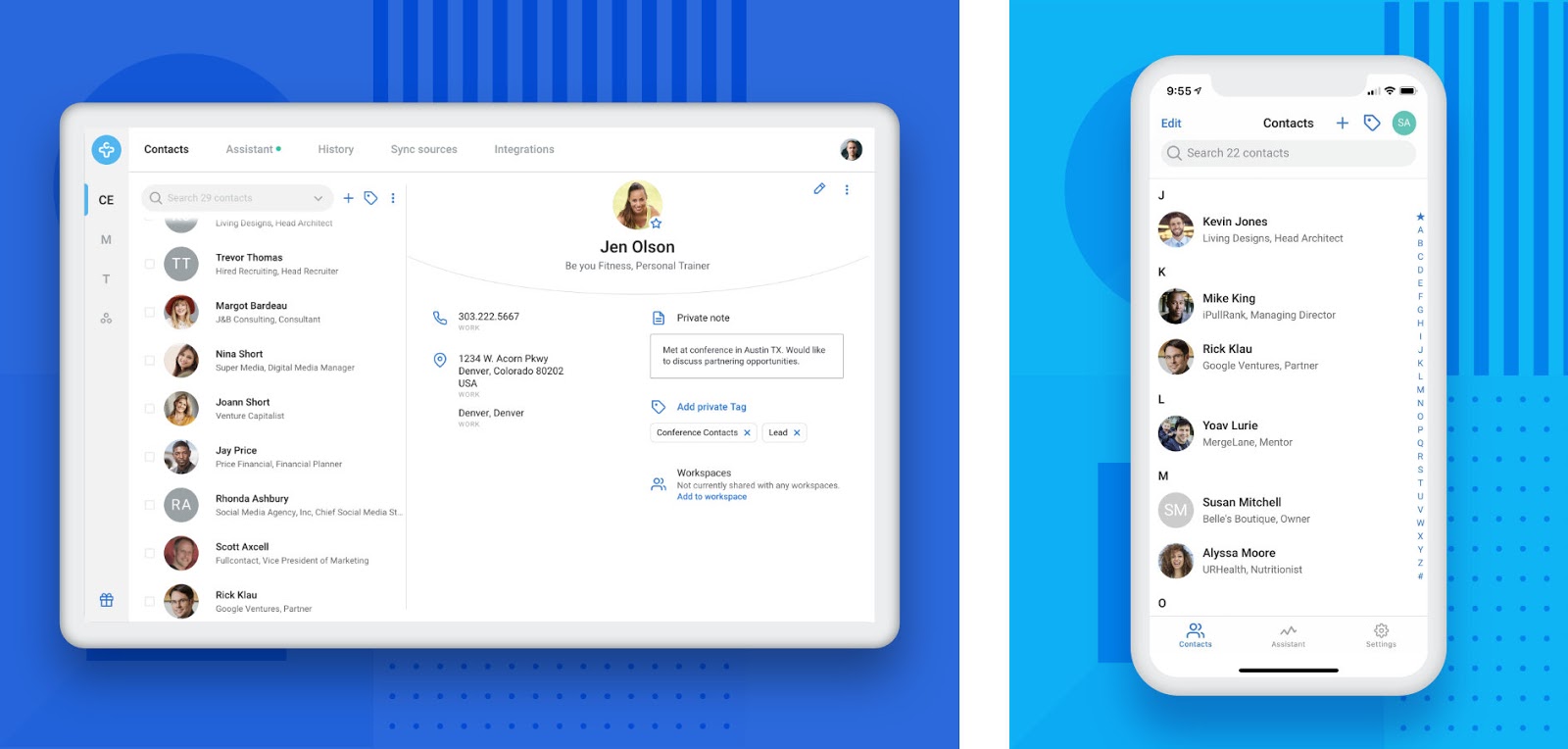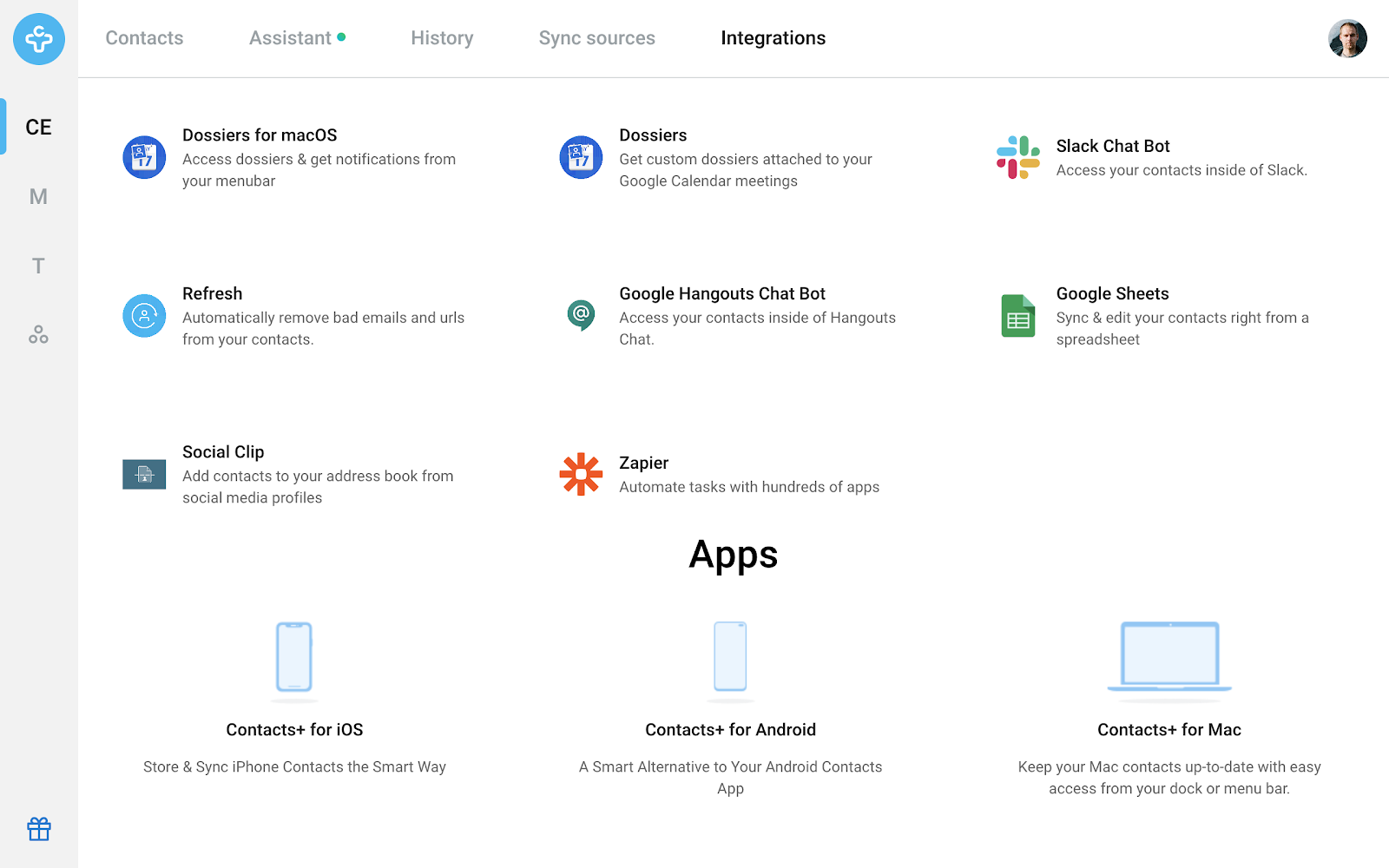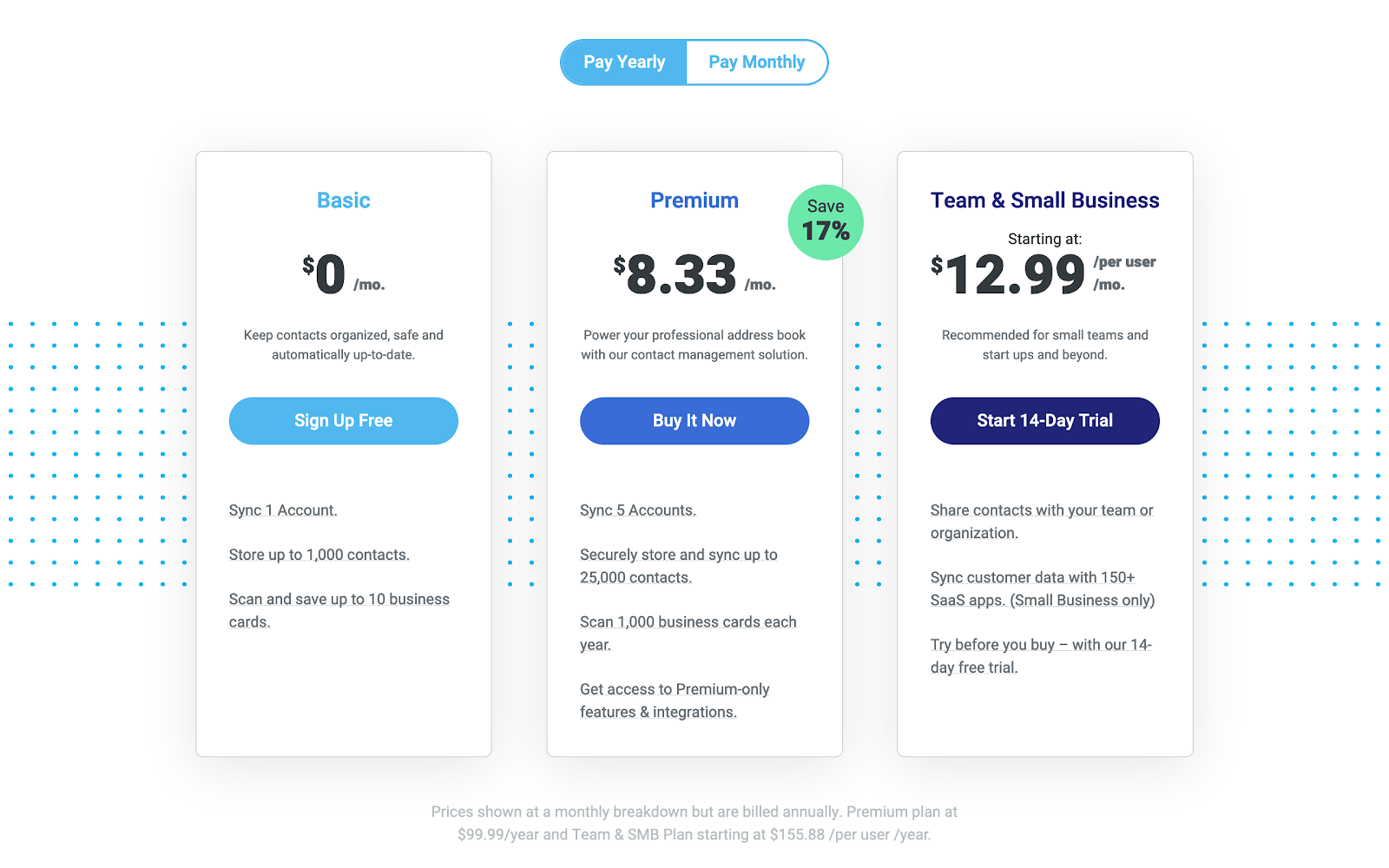Thanks to ChartMogul, Contacts+ is using their data to understand the behavior of their customers, cut churn in half, and boost retention.
What is Contacts+

Contacts+ is an intelligent address book targeted at professionals and small teams who want to keep their contacts organized and synchronized across all accounts and devices they use.
Contacts+ is part of the FullContact family of brands with a dedicated team of 25 employees. The company calls Denver, CO home, but the team is distributed, spread across the US, Israel, Latvia, and other locations.
Travis Todd is a co-founder at FullContact, but in his current role, he is fully dedicated to Contacts+ as the team’s Head of Revenue.
We spoke to Travis to learn about the challenges his team faces on a daily basis and how ChartMogul helps overcome them.
The Challenge: “It felt like we were flying in the clouds”
Contacts+ has a complex setup to handle billing. When they set out, they desired to allow customers to pay in a way that meets the customer’s preference, which usually meant incorporating native billing based on the underlying application platforms that they support.
Contacts+ has a platform with applications that are available on the web, iOS, Mac OS, and Android — and also has extensions that work with the Chrome browser along with a number of integrations. Thus, they maintain 4 distinct billing systems to give their audience the maximum flexibility. The billing systems include Stripe on Web, iOS App Store, Google Play, in addition to manual invoicing for larger Contacts+ for Teams customers.
A subscription for a customer then allows them to use any of the apps, integrations, or extensions on the platform no matter where the subscription initiated. Users are able to move their subscription if for some reason they no longer want to pay via one platform or the other.

With subscription and customer data split across so many platforms, it was very challenging for Travis and his team to get all this data into a consumable place that enabled actionable insights about what was happening with their business.
They didn’t have a clear picture of how things unfolded on a day-to-day basis — for example when a customer switched from paying on the iOS app to paying via their Web app, it appeared in the data as a churn event, and a new user event. When in reality it was a user simply moving from one billing system to another.
The biggest struggle was we had all of this data, we had reports that told us what our churn was, and frankly — just because of the complexity — there was a lot of doubt as to the accuracy of the reports that we had in place that reported our MRR, churn, new customers, and lost customers.
Travis Todd
Imagine flying a plane through a dense cloud.
This is the comparison Travis uses to describe the situation they were in. Тhe team had some basic dashboards and metrics, but because they couldn’t see the land underneath — or possible mountains in-front — they lacked conviction and confidence in where their product was really at.
“We weren’t thinking about reactivations at all”
Churn is one of the primary metrics that Contacts+ keeps a close eye on. However, before they started using ChartMogul, there were components of net churn that they lacked a complete picture of. This prevented Travis and his team from taking meaningful action on some portions of their churn.
Before, if someone churned, we pretty much assumed they were gone for good.
Travis Todd
One of the big revelations, after they started using ChartMogul, was that about a third of their monthly churn is recouped in reactivation within a few months.
We had put a lot of effort into addressing passive churn. That said, people are busy with life and expiration of a subscription before the user is able to update their credit card happens frequently.
Travis Todd
And what they found was that there was a sizeable group of customers, who would disappear for a few months, come back and renew their accounts later. These are people that likely churn because they change jobs, get new roles, go on vacation and forget to update their expired credit card, and probably for many other reasons.
But, those weren’t the only revelations that Contacts+ discovered when they started using ChartMogul.
The Solution: Clear skies ahead thanks to ChartMogul
One day Travis was doing research around tools that would allow his team to improve how they manage subscriptions on the iOS platform. That’s when he stumbled upon ChartMogul.
He signed up for a free trial and first connected their Stripe account.
He was immediately impressed with how easy the process was, how clean the data looked, and how the visual aspect of ChartMogul made it easy to understand trends in their business.
However, to get a full picture across the whole business, they had to overcome several challenges:
- They needed to incorporate Apple and Google billing data to get a complete picture.
- Apple does not return a unique identifier that allows them to match customers between platforms.
- The native ChartMogul integration with Apple only imported data going one year back.
To overcome these challenges, the Contacts+ team used the ChartMogul API for implementing App Store data, which allows for greater flexibility than the native integration. They recreated their entire billing history via purchase receipts with data going back to 2013, imported all their data, and matched each payment to a customer. The whole process of building the integration and migrating the data took less than 6 weeks.
They then built another custom integration to bring in payment data from Google Play (there was no native integration at the time).
That allowed them to combine all their data into one platform and merge customers who have paid on multiple systems. And because ChartMogul allows for a customer-centric view of your data, not just subscription-centric, it opened up a trove of insights about user behavior across their platform.
Once that was implemented, ChartMogul became an essential tool for Travis and his team. Nowadays, he uses ChartMogul daily to understand how things are moving in the business.
I have a tab with ChartMogul’s MRR report open at all times in my browser.
Travis Todd
ChartMogul is helping Contacts+ to cut their churn rate in half
The initial revelations led the team to understand that a lot of the churn they were experiencing could be avoided altogether.
Travis and his team created a plan and set an ambitious goal for 2019: to cut churn in half.
To do this, they needed to dig really deep into their data and understand where that churn was coming from and what was causing it.
If you just assume your churn is constant across the board and try to do something about it, you’re setting yourself up for failure. You have to develop a very deep understanding of where people are churning and why. There’s active churn, passive churn, there are churn dynamics that are very different across payment platforms and perhaps even payment plans.
Travis Todd
The team created segments in ChartMogul to start tracking the different payment platforms along with the type of plan the user selected — monthly vs. annual.
Combining those segments opened their eyes to the fact that they were doing well with some channels, but also helped them to identify the payment channels that they needed to focus their attention on. It allowed them to identify segments that had customers with a lifetime value (LTV) that exceeded the LTV of other segments by 300%.
Additionally, with Apple and Google Play, if a customer churns and you are able to reactivate them within a 60-day grace period, the platforms extend the 15% fee for returning customers (rather than the 30% for a new one).
Because of that, the Contacts+ team implemented a set of measures, including drip email campaigns, pushing churning customers to reactivate within the 60-day window.
The Result: Soaring towards cutting churn by 50% in 2019
Throughout Q1 and Q2, the team has achieved substantial progress and Travis is optimistic they will hit the ambitious goal they’ve set for themselves before the end of this year.
In addition, their success in tackling churn and understanding who their customers are has produced an even bigger appetite for learning about their audience and tailoring their efforts according to that knowledge.

Using ChartMogul and FullContact’s Enrich API, the team has gained an even deeper understanding of their ideal customer. It has allowed them to build even more robust segments and understand who their customers are on many different axes.
This allows us to understand really well the differences in people who, for example, buy an annual plan vs. those who pay us month-by-month. Or understand the difference in customers that have a high LTV, vs those who churn quickly. This knowledge allows us to really tailor our approach toward each group.
Travis Todd
With ChartMogul Contacts+ is flying in sunny skies
Even though Travis and his team had access to a huge trove of data, their inability to tie individual purchases to specific users prevented them from having a clear picture of their business across platforms. Instead of looking at the forest (customers), they were staring at the trees (individual subscriptions).
With ChartMogul, they went from looking at their business through a subscription lens to observing how they progressed on a customer level.
This allowed them to really change their approach towards reporting and acting on data and act on trends they didn’t even know existed before.
With ChartMogul, it feels like we’re out of the clouds and flying in clear skies. We can see the land below us and that gives us the confidence that we’re going in the right direction.
Travis Todd
To start using an intelligent address book to help you master your personal relationships, you can sign up for Contacts+ here.
